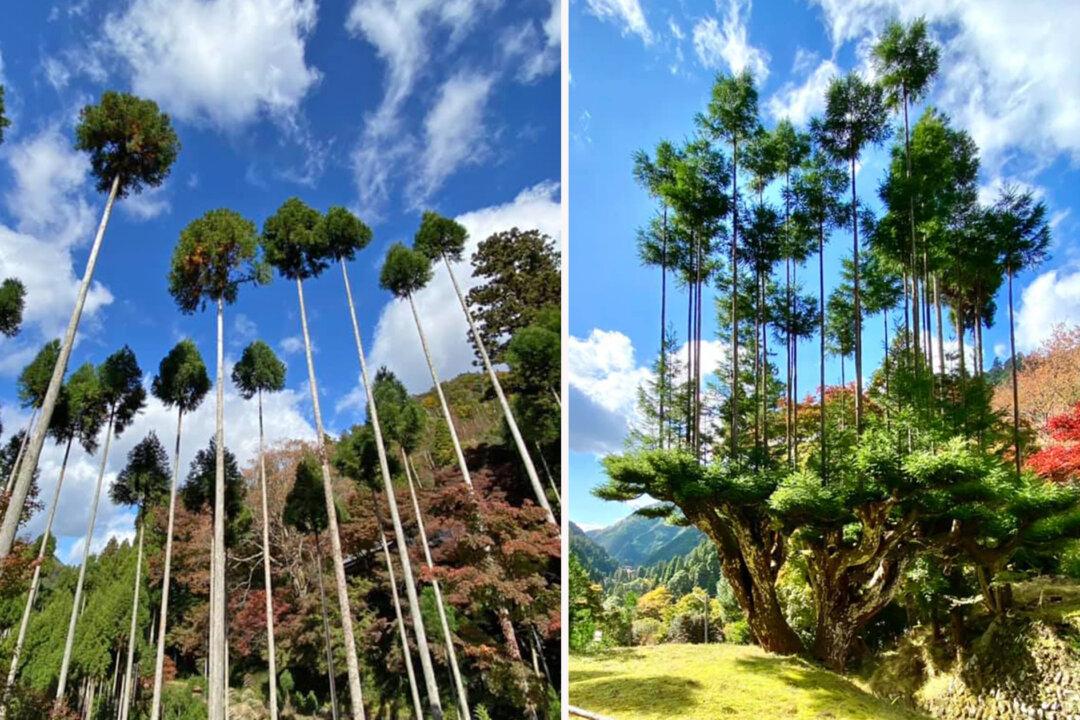To harvest more cedar wood in a shorter time and lesser space, ancient Japanese foresters had devised and championed an incredible technique of daisugi: a “giant bonsai” method that dates back to the 15th century.
Flexible, dense Kitayama cedar, harvested from the vast mountainous cedar forests of south-central Japan, has been in high demand as a building material for centuries, according to Earth Buddies. The trees grow incredibly straight and tall, without knots.





